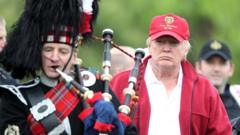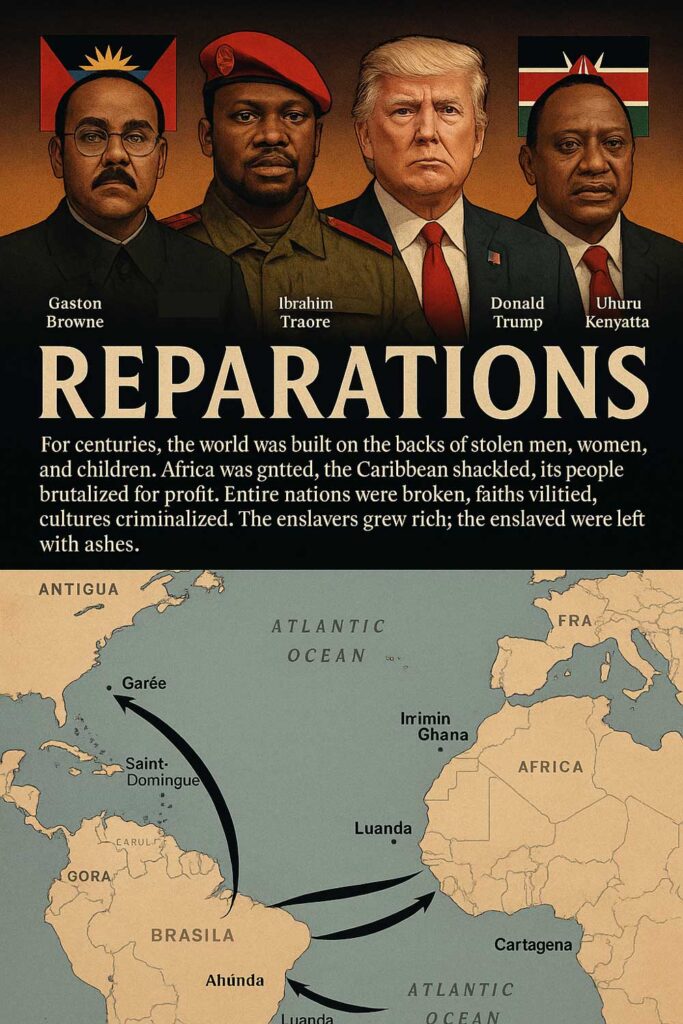Donald Trump returns to Scotland this month, marking a significant change from his first visit in 2006, when he enthusiastically announced plans for what he claimed would be the “world’s greatest golf course.” The man who held that press conference was a high-profile hotelier and reality TV star, far removed from the controversial figure he has become during his presidency. While he frequently praises Scotland and his Scottish roots, feelings from the Scottish public towards him have soured over the years.
Unlike many U.S. presidents who embrace their ancestral connections, Trump’s legacy in Scotland is largely negative. Despite having Scottish ancestry—which includes a mother who was born in Lewis, a Gaelic speaker who carried her accent throughout her life—Trump fails to inspire the same affection that figures like John F. Kennedy and Joe Biden have evoked from their Irish heritage. Recent opinions indicate approximately 70% of Scots view the president unfavorably.
In 2006, Trump's ambitious project on Aberdeenshire’s Menie Estate ignited significant controversy. His vision to build the golf course clashed with environmental concerns, particularly regarding the site’s designation as a Site of Special Scientific Interest (SSSI). The local government initially opposed Trump's plans, but approval was granted after political intervention based on anticipated economic benefits. However, public discontent grew not just from ecological worries; disputes from residents such as Michael Forbes and the Milne family fueled the backlash against Trump, portraying him as a domineering businessman insensitive to local sentiments.
Although Trump initially received some support from Scottish leaders, including then First Minister Jack McConnell, this changed significantly following his political rise. A misalignment between his actions—such as outspoken opposition to wind farm developments and aggressive local tactics—and the community's values led to a fracturing relationship. By 2012, Trump's visit to the Scottish Parliament was met with protests, further intensifying local animosity.
Moreover, the promise of economic prosperity surrounding Trump’s investment in the area has not borne fruit. Reports indicate that the golf resort has yet to yield profits and that job creation has been minimal, with a considerable number of jobs promised remaining unfulfilled. As Trump prepares to open a second golf course during this visit, the broader implications of his presence are under scrutiny.
He is expected to face protests upon arrival, reflecting ongoing tensions around his presidency and the feelings of locals who view him negatively. The anticipation surrounding Trump's visit raises crucial questions about the potential for peaceable engagements versus public outcry, and whether the former president will be swayed by the voices of the people during his time in Scotland. As his critics intensify their opposition in a landscape rife with environmental concern and community disputes, the complexities of his Scottish connection continue to manifest.
Unlike many U.S. presidents who embrace their ancestral connections, Trump’s legacy in Scotland is largely negative. Despite having Scottish ancestry—which includes a mother who was born in Lewis, a Gaelic speaker who carried her accent throughout her life—Trump fails to inspire the same affection that figures like John F. Kennedy and Joe Biden have evoked from their Irish heritage. Recent opinions indicate approximately 70% of Scots view the president unfavorably.
In 2006, Trump's ambitious project on Aberdeenshire’s Menie Estate ignited significant controversy. His vision to build the golf course clashed with environmental concerns, particularly regarding the site’s designation as a Site of Special Scientific Interest (SSSI). The local government initially opposed Trump's plans, but approval was granted after political intervention based on anticipated economic benefits. However, public discontent grew not just from ecological worries; disputes from residents such as Michael Forbes and the Milne family fueled the backlash against Trump, portraying him as a domineering businessman insensitive to local sentiments.
Although Trump initially received some support from Scottish leaders, including then First Minister Jack McConnell, this changed significantly following his political rise. A misalignment between his actions—such as outspoken opposition to wind farm developments and aggressive local tactics—and the community's values led to a fracturing relationship. By 2012, Trump's visit to the Scottish Parliament was met with protests, further intensifying local animosity.
Moreover, the promise of economic prosperity surrounding Trump’s investment in the area has not borne fruit. Reports indicate that the golf resort has yet to yield profits and that job creation has been minimal, with a considerable number of jobs promised remaining unfulfilled. As Trump prepares to open a second golf course during this visit, the broader implications of his presence are under scrutiny.
He is expected to face protests upon arrival, reflecting ongoing tensions around his presidency and the feelings of locals who view him negatively. The anticipation surrounding Trump's visit raises crucial questions about the potential for peaceable engagements versus public outcry, and whether the former president will be swayed by the voices of the people during his time in Scotland. As his critics intensify their opposition in a landscape rife with environmental concern and community disputes, the complexities of his Scottish connection continue to manifest.





















